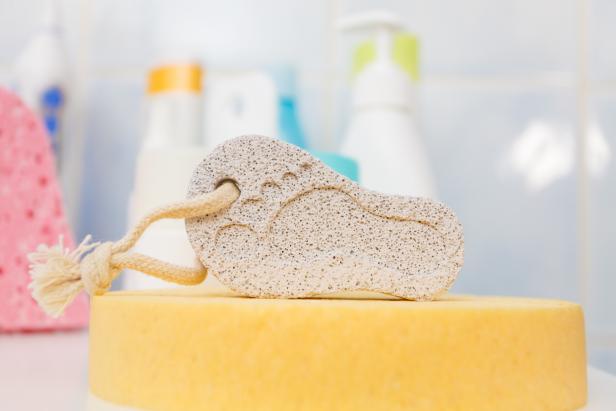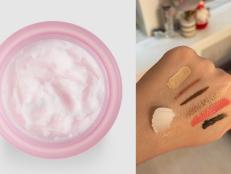What Is a Pumice Stone and What Are the Benefits?
Here’s why you should embrace the abrasive little guy.


Anetlanda
If you’re familiar with the world of mani-pedis and spa days, then you are no stranger to the pumice stone. It’s a handy lightweight tool primarily used for exfoliating. But did you know that this unassuming rock has an epic origin story and uses outside of the world of self-care?
Natural pumice stones are made from volcanic eruptions, which is pretty cool to begin with. Magma inside the volcano contains highly pressurized gas. When it erupts, the sudden drop in pressure causes the magma to quickly harden, creating slabs of the rock. The gas bubbles that were inside also cool rapidly and that creates the rock’s signature pores.
While pumice stones’ most common use is for exfoliating feet, especially heels, it can also be used to exfoliate other areas with hardened skin, such as elbows and knees. Most stones have two sides. One is for rougher patches of skin and one for more sensitive parts, or one to scrape while the other side smooths. The shape of the stone can vary too. Flatter stones are better for larger patches of skin and rounded stones help for body parts that bend. Some pumice stones have handles for better control and reach.
The benefits of properly using a pumice stone are softer and more comfortable feet and heels. Our feet bear our weight and are constantly coming into contact with the ground, so it's essential to make sure your feet are well taken care of. A pumice stone removes dead skin cells and can treat hard calluses, reducing friction and pain. Dry, cracked heels are common, and adding a pumice stone to your skin care routine can improve that by removing the layers of hard skin, cleaning, and prepping your heels for a moisturizing treatment.
There are a few risks involved with pumice stones, too. For starters, since they are so abrasive, it’s important to never use them when they are dry. Use water to dampen the stone, which creates a slight buffer. Your skin should also be wet, which will soften calluses or other rough areas.
You should also use very light pressure. Over-exfoliating can lead to tearing or removing too much skin. That can cause soreness, bleeding, a painful sensation in your feet, disrupt walking, and risk of infection. Once the stone is worn down, replace it.
It’s important to take care of pumice stones. Due to it’s pores it can absorb a lot of water and potentially grow bacteria. After each use you should rinse and clean the stone, then allow it to dry fully. You shouldn’t leave it in the shower, or anywhere wet, and you shouldn’t share pumice stones.
While pumice stones are great for exfoliating, their abrasive qualities are helpful for other tasks. Some soaps add it as an ingredient for jobs where hands may get grimy, such as grease or paint. It is also used to clean stubborn surfaces like the toilet or oven. In the fashion world, it’s a DIY tool for distressing clothes, and can remove the small fabric pills that gather on sweaters. Since it's porous, it's a great decorative material for landscaping and a component of hydroponic plant systems.
YOU MIGHT ALSO LIKE:















